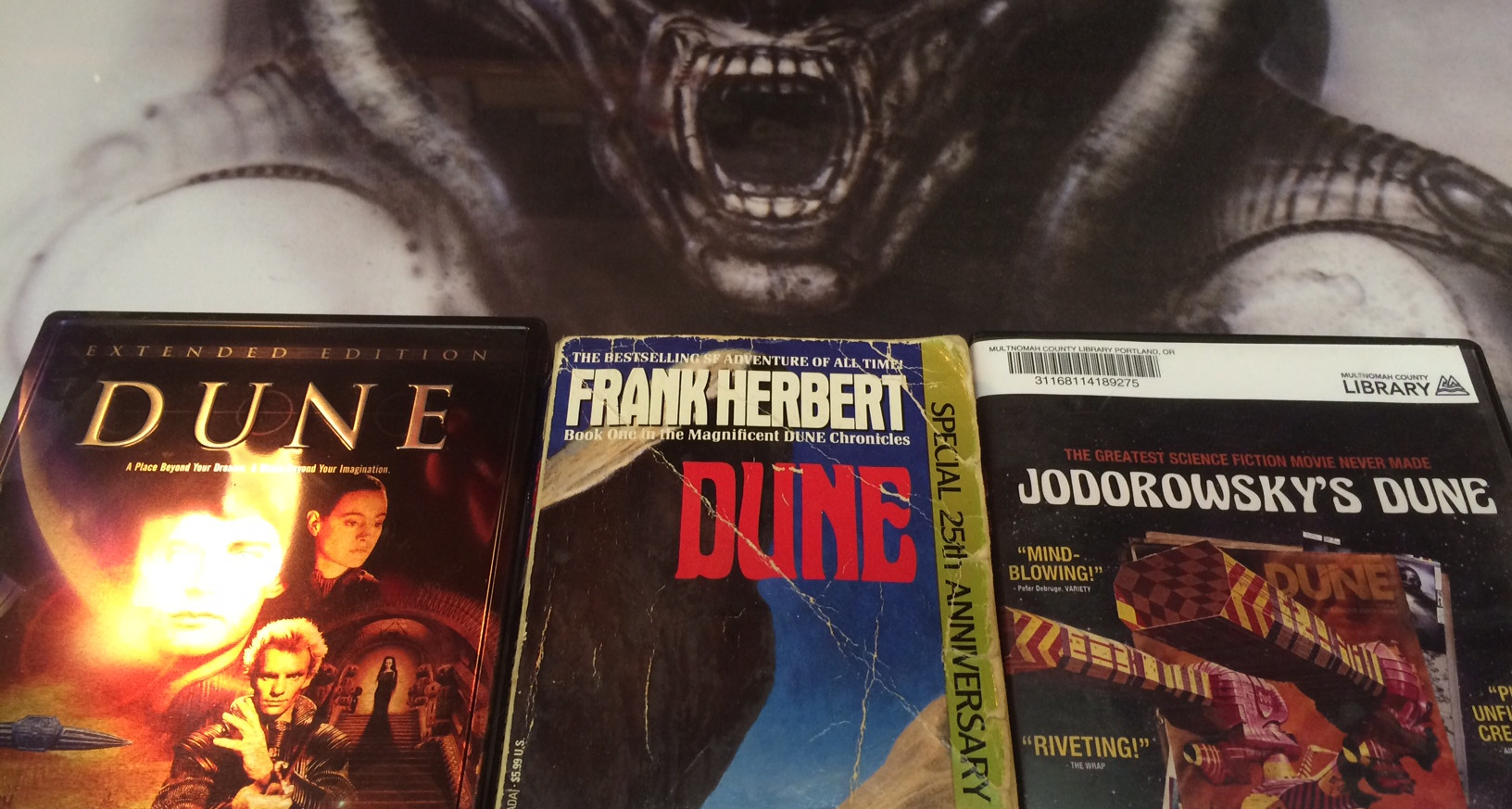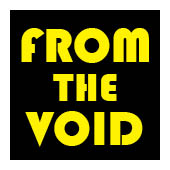
Fragments of Dune: The Jake Ten Pas Story
From this day forward, whenever I have the blues, I’ll pray to St. Jodorowsky. For last night, as it was likely written in his original 3,000-page manuscript for “Dune,” I had a religious experience while watching the documentary “Jodorowsky’s Dune.”
It is entirely possible that my viewing of this documentary, based on the cult filmmaker’s failed attempt to bring his own vision of Frank Herbert’s science fiction masterpiece to the screen back in 1975, wasn’t in his original script. I’ll admit that. But given how much was in that script, that was never in the book, and will never be seen by human eyes, I stand by my earlier assertion.
Alejandro Jodorowsky is a genius, a futurist, a prophet, and a mad man, after all, and all too often the truth comes to those without the power to communicate it to others. In 1975, however, it seemed like Jodo, as he was known to friends, might just defy the odds. He’d secured the rights to the story, as well as Pink Floyd and Magma to soundtrack his film, and David Carradine, Orson Welles, Salvador Dali, and Udo Kier to star in it. He’d convinced the cream of the visual arts crop to help him realize his vision, from Jean Giraud, aka Moebius, and Chris Foss to Dan O’Bannon and HR Giger. Together, they’d created concept art, costumes, models, and an all-around universe the likes of which Hollywood had never before imagined.
Then it all fell apart.
Because “Jodorowsky’s Dune” documents the death of this communal dream in legitimately tear-jerking detail, and because you should watch it if you give a damn about film, I won’t dwell on that aspect of this story. Instead, what captivated me was the way in which Jodorowsky’s dream lived on. Whether through the roles of his collaborators in future sci-fi classics such as “Alien” and “Star Wars,” and even David Lynch’s so-bad-it’s-pretty entertaining version of “Dune,” or through Jodorowsky’s own comic books he created with Moebius and others, the director’s vision fragmented like the consciousness of Paul Atreides upon getting a whiff of Melange.
Even after he failed, Jodorowsky kept trying. Perhaps that’s because it wasn’t his failure, but rather that of Hollywood, which simply couldn’t comprehend a depiction of a universe that lurid, mind-expanding, and youthful. It would be two years before “Star Wars” would change the way Hollywood made movies, and as Nicolas Winding Refn opines in the film, Hollywood history might have been changed forever had Jodorowsky gotten there first.
What-ifs are the crysknife of the soul, and we can stab ourselves to death with them. Instead, as Jodorowsky did, we must persevere even on days when it seems like the sandworm swallowed us, and not the other way around (to paraphrase Sam Elliot from “The Big Lebowski”). And while many of us have bad days – days where it’s impossible to imagine the point of getting out of bed or trying one more time to make any dream we’ve ever had a reality – few of us have had days as bad as Jodorowsky had when he realized that 3,000 pages, countless pieces of art, and a year of his and several of his cohorts’ lives had just been swallowed unceremoniously by the sands of time.
So, buck up, Ten Pas. Feel better, melancholy reader of From The Void. This, too, shall pass. And now, a triptych of recollections tied to the Dune-iverse, and dedicated to the collective imagination, the life-giving awareness, that Jodorowsky hoped his film would awaken within us all:
- In 1995, I moved into my first college residence, a pink ranch-style house on 13th Street in Eugene. Sitting outside the front door was a box of leftovers from the previous tenants, including exactly one book, a worn copy of “Dune.” In the months to come, I would obsess over that book, having nightmares of the deep desert, betrayal, and transformation. I ended up reading the first four books in the Dune series, and about 20 other Herbert books, and every one has filled my mind with at least one new concept that further fractures the lens through which I view the world. One night in particular, I was utterly transported in the dunes outside Florence, sprinting across the sand, sure that I could hear the wormsign of an approaching Shai-Hulud, laughing insanely at the potency of my own imagination. To this day, on the right kind of night under the stars in the desert, I’m on Arrakis. As one who is constantly disappointed in the lack of leviathans in daily life, these moments when mind transcends matter to create something fantastical and seemingly realistic are the closest to escaping the constraints of reality that I’ll ever come.
- In the late aughts, while traveling through Switzerland, Austria, and Germany with my parents and Mary Ann, I happened to read that an HR Giger exhibit was soon set to expire at the Deutsches Filmmuseum in Frankfurt. Loving Giger’s work for the “Alien” movies, as well as his covers for ELP, Island, Magma, and more, I made it my business to get there. I still have prints of his “Birth Machine” and an early sketch of the Alien hanging on the walls of my rumpus room that were inspired by this trip (and the upstairs of our house is filled with the works of the Secessionists we encountered in Vienna). But it was a small presentation of Giger’s work for an aborted version of “Dune” that most stuck with me. Egad, I yelped! There was an era when the film industry even toyed with the notion of letting Dali, Welles, Giger, Moebius, and Pink Floyd loose on the same property! Having never heard of Jodorowsky back then – I wouldn’t see “El Topo” and “Holy Mountain” until 2013 – I was more full of bliss that this cosmic flame had ever been stoked than saddened that it had burned out before completion. It was like I had found a window to an alternate universe, and I’ve slowly filled it with my own imagery over the years, making the payoff of watching the documentary recently that much more satisfying.
- I once wrote a rap song about “Dune.” Fortunately, talented musicians actually capable of creating good music also composed works based on the world of “Dune.” There’s Iron Maiden’s “To Tame A Land,” which legend has it was originally going to be called “Dune” until Herbert put the kibosh on it because he hated heavy metal. Electronic music is ripe with references to “Dune,” from Klaus Schulze’s album of the same name, to Bernard Szajner’s “Visions of Dune,” both released in 1979. Guitarist and synth mentat Richard Pinhas released his album “Chronolyse” a year earlier, and from the multi-part “Variations Sur Les Theme De Bene Gesserit” to a song called simply “Duncan Idaho,” it’s packed with “Dune” imagery. Whatever was in the water in the ’70s even made it to Australia, where the awesome and overlooked sax/synth band Cybotron included a song called “Arrakis” on its first album. There’s also a contemporary metal band from Seattle called Sandrider that allegedly wields the aural Gom Jabbar with ferocity. I hope to dance with it some day.
- Finally, over the years, I’ve self-applied the title of Kwisatz Haderach many times. I mean, life’s too short to wait around for others to proclaim you the super-being end-product of a generations-long breeding program, right? Not sure if this was Herbert’s intention, but the significance of this uber mensch to me was always that he brought together masculine and feminine characteristics into the ultimate state of consciousness. He seemed to be saying that a man couldn’t achieve true enlightenment until he attempted to see the world through the eyes of a woman, sharing empathetically her memories, feelings, and hopes. While my snarky-neanderthal-critiquing-music-and-fashion might not have been exactly what he had in mind, I like to think I strive for this kind of masculine feminism whenever possible. It’s helped me to (occasionally) be a better husband, friend, son, and human being. As Jodorowsky points out, the book is only part of the story. The rest is for you to write.





2 Comments
Even though I’m sure you’ve told me several times about the Dune That Never Was, I was probably not in a condition to remember the details (ahem) so reading that 3rd paragraph blew my mind and then swiftly broke my heart. Now excuse me while I go extract this crysknife from my soul…
I would dispute your statement that Hollywood couldn’t accept a youthful universe however. In my experience, the entertainment industry’s obsession with youth long ago crossed the border into illness and/or madness.
Your point is well taken regarding Hollywood’s obsession with youth, but I would say we’re talking about two separate issues. One is the casting of every part with an actor barely out of high school, who brings none of the character, cragginess, and world-weary aura to the screen that, say, a Lee Marvin would. The other is the actual putting into practice of the ideals of the younger generation who fought so hard to change our society for the better during the 60s and early 70s. Sure, there were amazing counterculture films like “Easy Rider,” “Performance,” and “Sweet Sweetback’s Badassssss Song,” but there were just as many that sought to exploit symbols of the counterculture for the same greedy buck that’s always ruled Hollywood. Jodorowsky wasn’t actually a young man (I think he was around my age now) when he set out to make Dune, but as an experimental artist, socialist (at a time when that term was even more unpopular), and intellectual, he had a vision for “Dune” that was every bit in keeping with the late 60s ideals that had already begun to dissipate into apathy and escapism by the mid-70s – as Hunter Thompson so beautifully articulated in “Fear and Loathing.” So, to recap, perhaps I should have clarified that “youthful” in this context referred to ideas, and a very specific generation, rather than age in general. You’re absolutely right that the TV and film industry’s obsession with youth as physical age has resulted in the creation of BS like the Twilight movies, and their 50 copycat canisters of crap. So often, I watch movies now and think, “How am I supposed to care about this character? He doesn’t even know who he is yet, and this is supposed to be about what a badass he is? Right.” Steve McQueen had more character in one eyebrow than Taylor Laughtner has in his whole ridiculous, steroid-addled body.